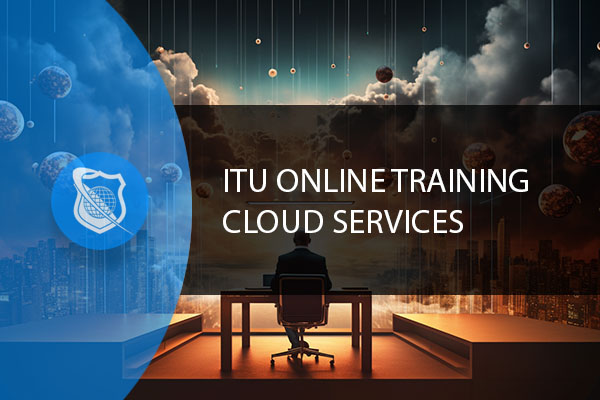Microsoft Azure offers robust solutions to address these needs through Azure ExpressRoute and Virtual WAN. Connecting on-premises networks to cloud services securely and efficiently remains a critical concern for many organizations. This blog post delves into the intricacies of setting up Azure ExpressRoute, its prerequisites, and how it coexists with VPN gateways. Additionally, we explore the concept of Azure Virtual WAN, a comprehensive solution that simplifies network architecture.

Azure Administrator Career Path
Become a highly skilled Microsoft Azure Administrator with our Azure administrator Career Path training series. This path include the core skills for Cloud, Network and Security with the CompTIA courses and then follows-up with our comprehensive AZ-104 Azure Administrator course. Elevate your career today.
Azure ExpressRoute: A Direct and Dedicated Connection
Azure ExpressRoute is a service that allows you to extend your on-premises networks into the Microsoft cloud over a private connection facilitated by a connectivity provider. This service offers a more reliable, faster, and lower-latency connection than typical internet-based connections, making it ideal for scenarios requiring high-performance, secure, and predictable connectivity. Here’s a detailed breakdown of setting up Azure ExpressRoute, including prerequisites and steps needed:
Prerequisites for Azure ExpressRoute
Before setting up ExpressRoute, several prerequisites must be met:
- Partnership with a Connectivity Provider: You must work with a Microsoft partner that can provide an ExpressRoute circuit. Microsoft has partnerships with many leading connectivity providers globally, ensuring you can likely find a suitable partner in your region.
- Azure Subscription: An active Azure subscription is required to create and manage ExpressRoute circuits within the Azure Portal or via the Azure CLI.
- Network Preparation: Your on-premises network must be prepared for connectivity, including configuring your edge network devices for BGP (Border Gateway Protocol). This preparation involves ensuring your devices can establish BGP sessions with Microsoft’s edge devices.
- Private Peering Configuration: You need to configure Azure private peering for your circuit. This step involves setting up BGP sessions for exchanging routes between your on-premises network and your Azure VNet(s).
Setting Up Azure ExpressRoute
Setting up ExpressRoute involves several key steps:
- Provisioning an ExpressRoute Circuit with a Connectivity Provider:
- Work with your chosen connectivity provider to request an ExpressRoute circuit.
- Provide the connectivity provider with your Azure subscription details and select your desired ExpressRoute plan, which includes bandwidth options and redundancy configurations.
- Creating an ExpressRoute Circuit in Azure:
- Navigate to the Azure Portal and create a new ExpressRoute circuit. During this process, you’ll select your service provider, peering location, and bandwidth.
- Once the circuit is provisioned in Azure, you’ll receive a service key. This key must be provided to your connectivity provider to link your on-premises network to the Azure network.
- Configuring Peering:
- Azure ExpressRoute supports three types of peering: Azure Private Peering, Microsoft Peering, and Azure Public Peering (deprecated for new circuits).
- Configure Azure Private Peering for direct access to Azure services over a private IP address. This setup requires specifying a primary and secondary subnet for Microsoft to use in the BGP session.
- For access to Microsoft online services like Office 365 via ExpressRoute, configure Microsoft Peering.
- Linking VNet to the ExpressRoute Circuit:
- Once the ExpressRoute circuit and peering configurations are in place, link your Azure Virtual Network (VNet) to the ExpressRoute circuit.
- This process involves creating an ExpressRoute gateway in your VNet and then linking the circuit to this gateway.
- Testing and Validation:
- After linking your VNet to the ExpressRoute circuit, test the connectivity to ensure that routes are being advertised correctly through BGP and that you can access Azure resources from your on-premises network.
- Monitoring and Maintenance:
- Azure provides tools and metrics for monitoring the health and performance of your ExpressRoute circuit. Regular monitoring is essential to ensure optimal performance and to troubleshoot any issues that may arise.
Management and Scaling
- ExpressRoute Circuits: You can manage your circuits through the Azure Portal, Azure CLI, or PowerShell. This includes modifying bandwidth, adding or removing peering, and deleting circuits.
- Scaling: If your bandwidth needs increase, you can scale your ExpressRoute circuit by either upgrading your plan through your connectivity provider or provisioning additional circuits for added redundancy and capacity.
- Failover and Redundancy: For high availability, it’s recommended to set up redundant ExpressRoute circuits with your connectivity provider, ideally in different peering locations.
Azure ExpressRoute provides a direct and dedicated connection to Azure, offering enhanced security, reliability, and performance compared to internet-based connections. Proper setup and management of ExpressRoute can significantly improve your cloud computing experience, enabling more efficient operations and a seamless hybrid cloud environment.
CompTIA Cloud+ Training
Unlock the world of cloud computing with our CompTIA Cloud+ training course! Master the skills to build, optimize, and ensure high availability in complex cloud environments. Prepare to ace the CompTIA Cloud+ CV0-003 exam with confidence. Your path to certification starts here!
Coexistence with VPN Gateways: Enhancing Connectivity and Redundancy
The coexistence of Azure ExpressRoute and VPN Gateways is a powerful setup that ensures high availability, reliability, and secure connectivity between your on-premises network and Azure. This hybrid networking approach allows you to use ExpressRoute for a dedicated, low-latency connection to Azure while also leveraging VPN gateways as a failover solution for resilience. Here’s how to effectively implement and manage this coexistence:
Understanding the Coexistence
- Primary Connection: ExpressRoute serves as the primary connection to Azure, offering a direct path that bypasses the public internet, ensuring higher security, reliability, and lower latencies.
- Failover Path: VPN Gateways act as a secondary, failover connection path. In case the ExpressRoute connection is disrupted, traffic automatically reroutes over the VPN gateway, maintaining connectivity to Azure services.

Azure Administrator Career Path
Become a highly skilled Microsoft Azure Administrator with our Azure administrator Career Path training series. This path include the core skills for Cloud, Network and Security with the CompTIA courses and then follows-up with our comprehensive AZ-104 Azure Administrator course. Elevate your career today.
Configuration Steps
- Set Up Azure ExpressRoute:
- Begin by setting up an ExpressRoute circuit as detailed in previous sections, including provisioning the circuit with a connectivity provider and configuring Azure private peering.
- Provision a VPN Gateway:
- In parallel to the ExpressRoute setup, provision a VPN Gateway in the Azure portal. This involves creating a Virtual Network Gateway of type VPN.
- Configure the VPN Gateway with the required IPsec/IKE policies that match your on-premises VPN device’s configurations.
- Configure VPN Gateway as a Failover Route:
- Ensure that your on-premises network device is configured to establish a VPN connection to Azure.
- Configure BGP (Border Gateway Protocol) on both the ExpressRoute and VPN connections to dynamically learn and advertise routes. This step is critical for enabling automatic failover between ExpressRoute and the VPN Gateway.
- Link the VPN Gateway to the Same VNet as ExpressRoute:
- Both the ExpressRoute and VPN gateways must be linked to the same Azure Virtual Network (VNet) to facilitate smooth failover. This is achieved by creating respective gateway subnets within the same VNet.
- Test Failover Scenarios:
- Conduct tests to ensure that in the event of an ExpressRoute failure, traffic seamlessly fails over to the VPN Gateway without significant disruption to services.
Best Practices for Coexistence
- Route Prioritization: Use BGP route prioritization to ensure that ExpressRoute is always the preferred path when available. The VPN connection should have a higher BGP route weight, making it the secondary path.
- Monitoring and Alerting: Implement monitoring and alerting for both ExpressRoute and VPN connections. Azure Network Watcher provides tools for monitoring network performance and diagnosing connectivity issues.
- Redundant VPN Gateways: For added resilience, consider setting up redundant VPN Gateways in different Azure regions. This approach further protects against regional Azure outages.
- Consistent Security Policies: Apply consistent security policies and configurations across both ExpressRoute and VPN connections to ensure uniform security posture.
Implementation Considerations
- Cost: While ExpressRoute provides a dedicated connection with consistent performance, it comes with a higher cost compared to VPN Gateways. Budget for both the ExpressRoute circuit and the VPN Gateway, especially if the VPN Gateway is intended for regular failover use.
- Latency and Throughput: Be aware that VPN connections typically have higher latency and lower throughput compared to ExpressRoute. This difference should be considered when planning for failover scenarios.
- Complexity: Managing coexistence adds complexity to your network architecture. Proper configuration, regular testing, and maintenance are required to ensure seamless operation.
In summary, the coexistence of Azure ExpressRoute with VPN Gateways offers a robust networking solution that combines the high performance and reliability of ExpressRoute with the failover capabilities of VPN Gateways. By carefully planning, implementing, and managing this setup, organizations can ensure continuous connectivity to Azure, even in the face of network disruptions.

Get Ahead In Cloud Computing
At ITU, we offer an exclusive Cloud Computing training series designed to prepare you for certification and/or to help you gain knowlege of all Cloud based platforms including AWS, Azure and Gooogle Cloud.
Get access to this exclusive Cloud Computing Training today.
Azure Virtual WAN: Simplifying Network Architecture
Azure Virtual WAN (vWAN) represents a pivotal advancement in cloud networking, aiming to simplify the network architecture by integrating various networking, security, and routing functionalities into a unified, scalable, and easy-to-manage service. This service is particularly beneficial for organizations looking to streamline their connectivity between on-premises networks, Azure resources, and other cloud environments. Below, we explore the key features of Azure Virtual WAN, alongside insights into its implementation and management.
Key Features of Azure Virtual WAN
- Integrated Networking and Security: Azure Virtual WAN combines traditional networking components (like VPN and ExpressRoute) with Azure’s security and routing features, providing a comprehensive solution that enhances both connectivity and security.
- Automated Connectivity: It simplifies branch-to-Azure connections, leveraging the Azure backbone for high-performance, reliable connectivity. This includes automated site-to-site VPN configurations, making it easier to connect branch offices directly to Azure.
- Scalable and Global Reach: Virtual WAN allows for scaling as needed, supporting thousands of endpoint connections. This scalability, combined with Azure’s global presence, enables organizations to grow their network footprint without the complexity typically associated with global network expansions.
- Optimized Routing: Utilizing the Azure backbone, Virtual WAN optimizes routing, ensuring low-latency and high-bandwidth connections between branches, Azure data centers, and other cloud environments.
- Unified Management Interface: Through the Azure portal, Virtual WAN consolidates management tasks, offering a single pane of glass for monitoring and managing all network connections, policies, and health metrics.
Implementation and Management
Implementing and managing Azure Virtual WAN involves several steps, aimed at consolidating various networking functions into a streamlined service. Here’s a brief overview of the implementation process and management considerations:
- Setting Up Virtual WAN: The process begins in the Azure portal, where you create a Virtual WAN resource. This acts as the central hub for your network architecture, to which you can attach various sites, VPN connections, and Azure resources.
- Configuring Hubs: Within the Virtual WAN, you set up hubs in the regions where you need connectivity. These hubs serve as the core of your network, facilitating connections between on-premises sites, Azure resources, and, if necessary, other cloud providers.
- Connecting Sites and Users: You can connect branch offices using site-to-site VPN, ExpressRoute connections for dedicated connectivity, or even remote users via point-to-site VPN. Azure Virtual WAN automates much of the configuration required for these connections.
- Routing and Security Policies: Through the Azure portal, you define and manage routing policies to control how traffic flows through your network. You can also integrate Azure Firewall and other security services to protect your network traffic.
- Monitoring and Troubleshooting: Azure provides comprehensive monitoring tools, including Azure Monitor and Network Watcher, to track the health and performance of your Virtual WAN. This simplifies troubleshooting and ensures your network meets performance expectations.
- Scaling and Optimization: As your networking needs evolve, Virtual WAN allows for easy scaling of connections and bandwidth. Additionally, its integration with the Azure backbone ensures that your network remains optimized for performance, regardless of scale.
Azure Virtual WAN represents a significant leap forward in simplifying complex network architectures, especially for organizations with extensive branch networks or those requiring seamless, secure connectivity to Azure and beyond. By consolidating networking functions into a single, manageable service, Azure Virtual WAN not only simplifies deployment and management but also enhances performance and security across the network. Its scalable, global infrastructure ensures that organizations can expand their networks efficiently, backed by the robustness and reliability of the Azure ecosystem.
Conclusion
Azure ExpressRoute and Virtual WAN offer powerful solutions for organizations looking to enhance their cloud connectivity. ExpressRoute provides a dedicated, high-speed link to Azure services, ensuring optimal performance and security. In contrast, Azure Virtual WAN simplifies network architecture, offering a unified, scalable approach to managing global connectivity. By leveraging these services, organizations can achieve a more secure, reliable, and efficient connection to the cloud, driving their digital transformation efforts forward.
Key Term Knowledge Base: Key Terms Related to Azure ExpressRoute and VPN Gateway Integration
Understanding the key terms related to Azure ExpressRoute and VPN Gateway Integration is crucial for professionals and enthusiasts navigating the complex landscape of cloud networking and security. These terms form the foundation of discussions, implementations, and optimizations in cloud infrastructure, particularly in hybrid cloud setups where secure, reliable connectivity is paramount. Familiarity with these terms not only facilitates smoother communication among team members but also enhances one’s ability to design, troubleshoot, and manage network integrations between on-premises environments and Azure cloud services effectively.
| Term | Definition |
|---|---|
| Azure ExpressRoute | A service that provides a private connection between an organization’s on-premises infrastructure and Microsoft Azure data centers, bypassing the internet for enhanced security and reliability. |
| VPN Gateway | A type of virtual network gateway in Azure that sends encrypted traffic across a public connection to an on-premises location, acting as a secure bridge. |
| Virtual Network (VNet) | An isolated network within the Azure cloud that allows Azure resources to securely communicate with each other, the internet, and on-premises networks. |
| Peering | The process of connecting two separate networks for the purpose of sharing resources and data. In Azure, it can refer to VNet peering or ExpressRoute peering. |
| GatewaySubnet | A specific subnet within an Azure VNet dedicated to hosting virtual network gateways, including VPN Gateway and ExpressRoute Gateway. |
| ExpressRoute Circuit | A logical connection between an on-premises network and Azure through an ExpressRoute provider, enabling private connectivity. |
| SKU | Stock Keeping Unit, in Azure, refers to the size or tier of an ExpressRoute or VPN Gateway, dictating performance, features, and cost. |
| S2S VPN | Site-to-Site VPN, a connection that links an entire on-premises network to a virtual network in Azure, typically using a VPN Gateway. |
| P2S VPN | Point-to-Site VPN, a connection that allows individual devices to connect to an Azure VNet, often used for remote worker access. |
| BGP (Border Gateway Protocol) | A protocol used for exchanging routing information between different networks on the internet, crucial for routing decisions in ExpressRoute connections. |
| ASN (Autonomous System Number) | A unique identifier allocated to each network on the internet, used in BGP routing to specify policy routes between different autonomous systems. |
| SLA (Service Level Agreement) | A contract between a service provider and a customer that specifies the performance and availability standards the service is expected to meet. |
| Redundancy | The duplication of critical components or functions of a system with the intention of increasing reliability of the system, usually in the form of backup or failover solutions. |
| Direct Peering | A type of ExpressRoute peering that allows direct connection to Microsoft’s services without traversing the public internet. |
| Exchange Peering | A type of ExpressRoute peering designed for connectivity to Microsoft Cloud services across all regions, except those in China and government clouds. |
| ER-Gateway | ExpressRoute Gateway, a gateway deployed in an Azure VNet for connectivity to an ExpressRoute circuit. |
| Local Network Gateway | An Azure resource that represents an on-premises VPN device or network and its settings for a Site-to-Site VPN connection. |
| Public IP Address | An IP address that is routable on the internet, assigned to Azure resources to enable communication with the internet and external networks. |
| Private IP Address | An IP address within a VNet or on-premises network that is not routable on the internet, used for internal network communication. |
| Azure Resource Manager (ARM) | A deployment and management service in Azure that provides a management layer enabling users to create, update, and delete resources in their Azure account. |
| Network Security Group (NSG) | A filtering security mechanism in Azure that controls inbound and outbound traffic to network interfaces (NIC), VMs, and subnets. |
| ExpressRoute Global Reach | A feature that allows connecting two or more ExpressRoute circuits together, enabling private data exchange across geographically dispersed locations. |
| Latency | The time taken for data to travel from its source to its destination, critical in network performance and user experience. |
| Throughput | The rate at which data is transmitted between locations within a network, often measured in megabits per second (Mbps) or gigabits per second (Gbps). |
| MPLS (Multiprotocol Label Switching) | A routing technique in telecommunications networks that directs data from one node to the next based on short path labels rather than long network addresses. |
This comprehensive list encompasses the essential terminology for professionals working with Azure ExpressRoute and VPN Gateway Integration, providing a solid grounding in the subject matter.
Frequently Asked Questions Related to Azure ExpressRoute and VPN Gateway Integration
What is Azure ExpressRoute and how does it differ from VPN connections?
Azure ExpressRoute is a service that allows you to create a private connection between your on-premises infrastructure and Microsoft Azure data centers. This connection is facilitated through a connectivity provider and does not traverse the public internet, providing higher security, reliability, and lower latencies compared to traditional VPN connections. Unlike VPNs, which encrypt data over the internet, ExpressRoute provides a dedicated, direct connection that can offer more consistent performance and bandwidth.
Can I use Azure ExpressRoute to connect to services like Office 365 and Dynamics 365?
Yes, Azure ExpressRoute can be used to connect to various Microsoft online services including Office 365 and Dynamics 365. This requires configuring Microsoft Peering on your ExpressRoute circuit, which allows you to exchange traffic for a wide range of Microsoft services beyond just Azure.
What are the bandwidth options available with Azure ExpressRoute?
Azure ExpressRoute offers a range of bandwidth options to suit different needs, starting from 50 Mbps and going up to 10 Gbps for standard circuits. For those requiring higher bandwidth, Microsoft also offers ExpressRoute Direct, which supports up to 100 Gbps.
How do I ensure redundancy and high availability with Azure ExpressRoute?
To ensure redundancy and high availability, it is recommended to set up redundant ExpressRoute circuits through different connectivity providers or different peering locations. Additionally, integrating ExpressRoute with a VPN gateway as a failover path can provide further resilience against connectivity issues.
What is the pricing model for Azure ExpressRoute?
The pricing for Azure ExpressRoute includes charges for the port fees based on the bandwidth capacity of the circuit and outbound data transfer fees. Port fees are fixed monthly charges, while data transfer fees vary based on the volume of data moving out of Azure over the ExpressRoute connection. Note that inbound data transfer to Azure is generally free of charge. Pricing can also vary based on the region and the service provider chosen for the connection. It’s important to consult the Azure pricing page or contact a Microsoft sales representative for the most current and detailed pricing information.

























